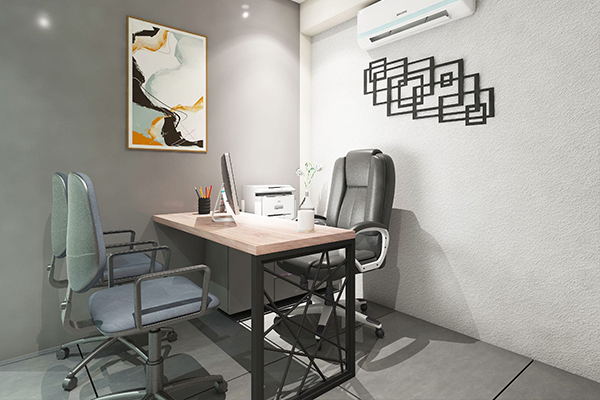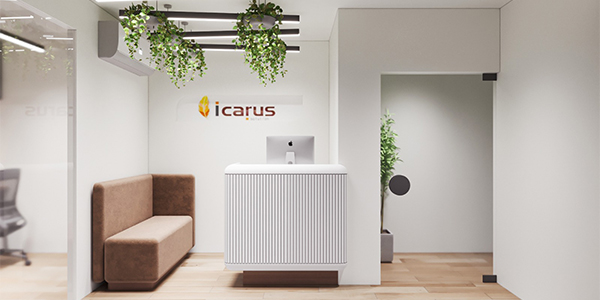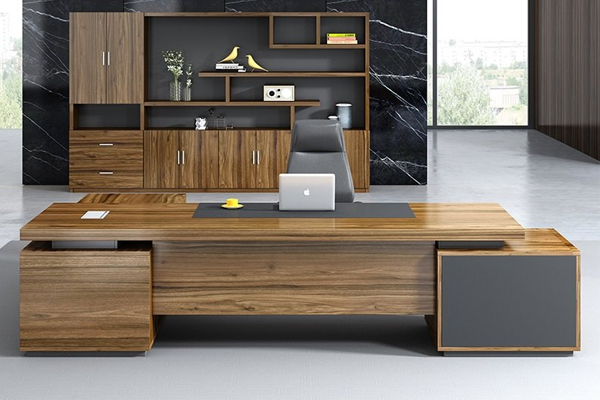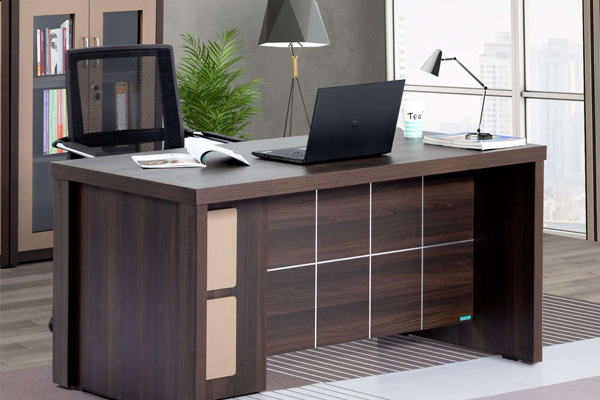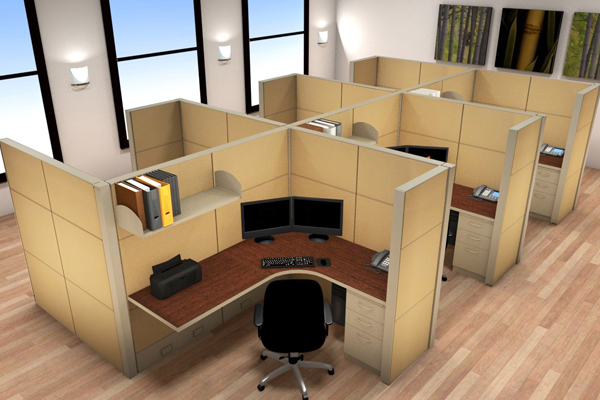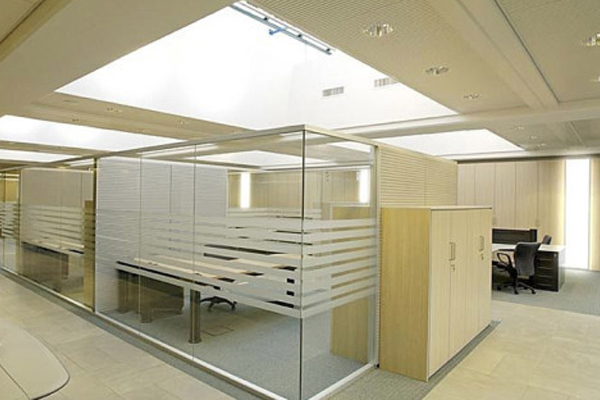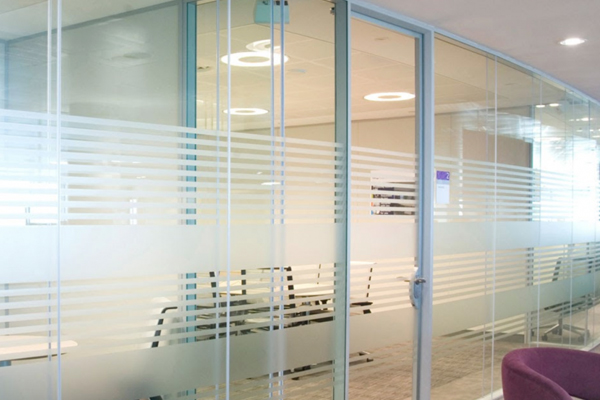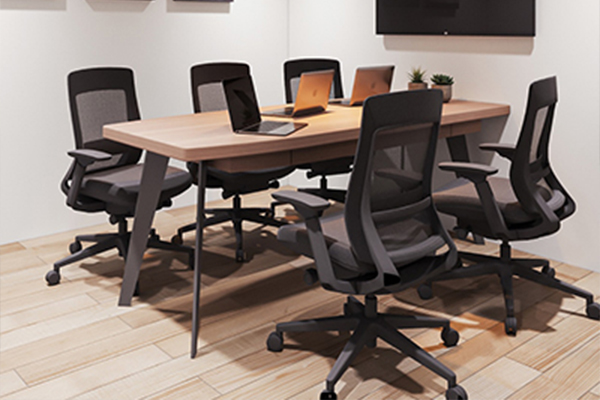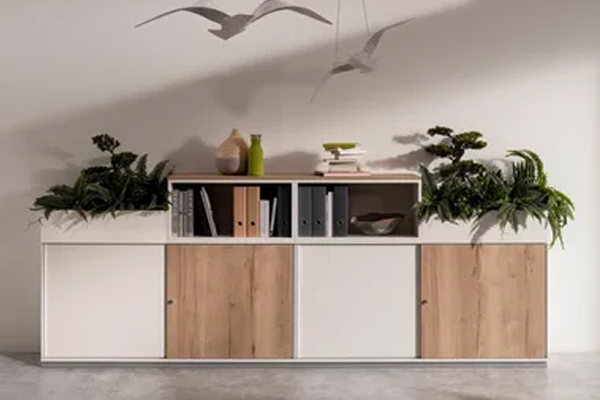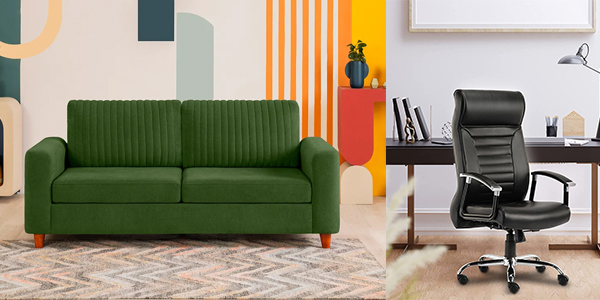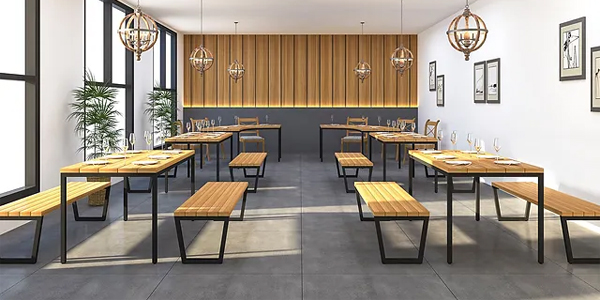- Reception Tables
- Director’s Table
- Executive Tables
- Workstations / Cubicles
- Low / Full Height Partitions
- Conference / Meeting Table
- Storage / Sofa
- Chairs
- Canteen Furniture
Reception Tables
Reception tables serve as the focal point of entry spaces, whether in an office, hotel, or event venue. They’re not just functional; they also set the tone for the environment.
Director’s Tables
In a literal sense, it might refer to a table typically situated in the office of a director or a high-ranking executive. These tables are often larger and more ornate than standard office desks, symbolizing authority and leadership.
Executive Tables
Executive tables are usually larger and more luxurious than standard office desks, reflecting the status and authority of the individuals who use them. They often have built-in storage compartments, such as drawers or cabinets, to keep important documents and personal items organized.
In addition to providing a functional workspace, executive tables also serve as a symbol of power, prestige, and professionalism within the workplace. The design and placement of these tables can convey a sense of authority and leadership to employees and visitors alike.
Workstations / Cubicles
Workstations: Workstations are individual areas within an office where employees perform their tasks. These areas typically include a desk or table, a chair, and sometimes storage space such as shelves or drawers. Workstations may be arranged in rows or clusters, depending on the layout of the office space. They provide employees with a dedicated area to focus on their work while still being part of a larger office environment.
Cubicles: Cubicles are a specific type of workstation that is enclosed on three sides by partitions or walls. Cubicles offer a degree of privacy and separation from neighboring workspaces, while still allowing for communication and collaboration with nearby colleagues. They often include a desk or table, a chair, storage space, and sometimes additional features like overhead bins or task lighting.
Low Height Partitions
- Low height partitions are typically shorter dividers that extend only partway up from the floor, often stopping below eye level when seated.
- These partitions are often used to create visual separation between workstations while still allowing for easy communication and collaboration between colleagues.
- They can help define individual work areas without completely isolating employees from each other or blocking natural light within the office space.
- Low height partitions are popular in open office layouts, where maintaining a sense of openness and connectivity is desired.
Full Height Partitions
- Full height partitions extend from the floor to the ceiling, creating complete separation between workspaces or areas.
- These partitions offer more privacy and sound isolation compared to low height partitions, making them suitable for environments where concentration and confidentiality are important.
- Full height partitions can help reduce distractions and provide employees with a greater sense of privacy and personal space within the office.
Conference / Meeting Tables
Conference tables come in various shapes, sizes, and styles to accommodate different needs and preferences. They are typically used in meeting rooms, boardrooms, or conference rooms for discussions, presentations, and collaborative work.
Meeting tables serve as focal points for discussions, collaboration, and decision-making in various settings such as offices, conference rooms, and co working spaces.
Storage Unit
A storage unit can be a valuable addition to any office or workspace, providing organization and space-saving solutions for various items.
Sofa / Chairs
Wide Range of Office Chairs, Office Desk Chair, Heavy Duty & Durable Quality Stadium Chairs, Manufacturer And Supplier Of Seating Solution, Carefully Designed Public Seating
Canteen Furniture
Canteen furniture plays a crucial role in creating a comfortable and inviting dining space for employees, students, or visitors.
- Size and Scale
- Style and Aesthetic
- Comfort and Ergonomics
- Materials and Construction
- Functionality and Versatility
- Budget and Value
- Maintenance and Care


































